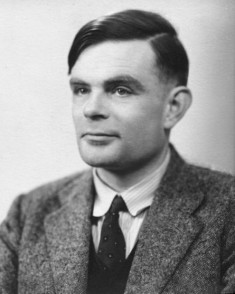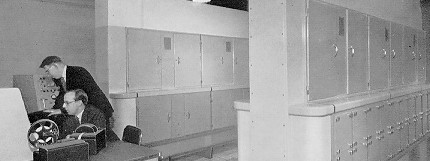Alan Turing
Alan Turing, the world famous mathematician and cryptographer who broke the German Enigma codes during World War Two, and who is considered to be the Father of Computer Science, was also involved in the development of the Ferranti Mark 1 computer.

In 1948, Turing joined the University of Manchester’s Department of Mathematics as a Reader and in 1949 became the “Deputy Director of the Royal Society Computing Machine Laboratory.” It is not clear what his official duties were initially with respect to the Mark 1 project. As soon as the Manchester Mark 1 was generally available for use in April 1949, Turing enthusiastically set about using it. In the summer of 1949 he was instrumental in acquiring paper tape equipment and assisted in attaching it to the Mark 1.
Turing made contributions to the additional capabilities of the Ferranti Mark 1, notably the random number generator. It is also likely that he influenced the comprehensive set of instructions provided on the Manchester Mark 1 in connection with the double length accumulator.
However, the main formal contribution Turing made to the Mark 1 project was that he worked on providing the early software requirements for the Manchester Mark 1 and wrote the first programming manual for the Ferranti Mark 1 titled “Programmers’ Handbook for the Manchester Electronic Computer Mark II.”
By 1951, Turing had withdrawn from active involvement in the Mark 1 project and subsequent computer development. However he was still a keen user of the computer as a tool for his research interests. He was always ready informally to help out other programmers of the Mark 1 with their problems.
Sadly, Turing died by his own hand shortly before his 42nd year in June of 1954. Who knows what great works he might have accomplished had he lived on?
